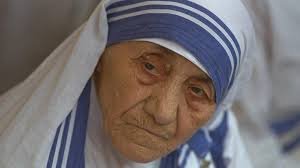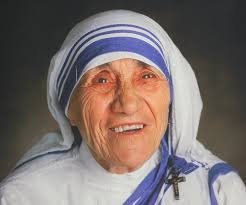Mother Teresa Early Life and Calling
Mother Teresa, born Anjezë Gonxhe Bojaxhiu on August 26, 1910, in Skopje (now North Macedonia), grew up in a devout Catholic Albanian family. Her father, a successful businessman, died when she was just eight, leaving her mother to raise the children with deep faith and charity. From a young age, Anjezë felt a strong calling to religious life. At 12, she first sensed a desire to serve the poor, and by 18, she left home to join the Sisters of Loreto in Ireland. After a brief stay, she was sent to India, where she began her novitiate in Darjeeling.
One lesser-known fact is that she never saw her mother or sister again after leaving for Ireland—a sacrifice she made for her mission. She took her final vows in 1937 and became “Sister Teresa,” teaching at St. Mary’s School for girls in Kolkata. However, a second, more profound calling would change her path forever.
The “Call Within a Call” and Founding the Missionaries of Charity
In 1946, while traveling by train to Darjeeling, Mother Teresa experienced what she described as a “call within a call”—a divine message urging her to leave the convent and serve the poorest of the poor. After receiving Vatican approval, she exchanged her traditional Loreto habit for a simple blue-bordered white sari and ventured into Kolkata’s slums.
She started by opening a small school in Motijhil, but soon realized that many were dying abandoned on the streets. In 1952, she established Nirmal Hriday (“Pure Heart”), a home for the dying, where the destitute could pass away with dignity. A touching story recounts how she once carried a maggot-infested woman off the streets, cleaned her wounds, and held her hand until she died peacefully. When asked why she did such difficult work, Mother Teresa simply replied, “Because I see Jesus in every human being.”
Expanding Her Mission Worldwide
By the 1960s, her work gained global attention. The Missionaries of Charity grew rapidly, opening centers for lepers, orphans, and the disabled. One of her lesser-known initiatives was “Shishu Bhavan,” a home for abandoned children, where she personally ensured they received love and care.
Her reach extended beyond India—she opened missions in Venezuela, Italy, Tanzania, and even communist countries like Cuba and the USSR. Despite political barriers, she insisted, “If there are poor people on the moon, we will go there too.” A remarkable story involves her secretly negotiating with Israeli and Palestinian forces during the 1982 Lebanon War to rescue 37 children trapped in a hospital.
Nobel Peace Prize and Global Recognition of Mother Teresa
In 1979, Mother Teresa was awarded the Nobel Peace Prize but refused the traditional banquet, asking that the $192,000 funds be given to the poor instead. Her speech emphasized, “The greatest destroyer of peace is abortion,” a stance that drew both admiration and criticism.
Despite her fame, she lived in extreme simplicity, wearing the same $1 sandals for decades. When Pope John Paul II visited her Kolkata home, he was stunned by its bareness—just a cot, a desk, and a single pair of shoes.

Controversies and Criticisms
Mother Teresa’s work was not without controversy. Some accused her missions of providing inadequate medical care, while others questioned her opposition to contraception and abortion. Christopher Hitchens famously criticized her in his documentary Hell’s Angel, claiming she glorified suffering rather than alleviating it.
However, her supporters argued that she worked with limited resources and focused on spiritual comfort over medical miracles. Former volunteers often shared stories of her relentless dedication—like the time she stayed up all night comforting a dying AIDS patient when no one else would touch him.
Declining Health and Death
In her later years, Mother Teresa suffered from heart disease, malaria, and multiple fractures but continued working. In 1997, after stepping down as head of the Missionaries of Charity, she passed away on September 5—the same day as Princess Diana’s funeral, which momentarily overshadowed her death.
India honored her with a state funeral, an unprecedented tribute for a foreign-born nun. Her order continued her legacy, with over 4,500 sisters operating in 133 countries by 2023.

Mother Teresa is Canonization and Sainthood
Mother Teresa was beatified in 2003 by Pope John Paul II after a miracle—an Indian woman’s tumor disappearing after praying to her—was verified. A second miracle, the healing of a Brazilian man with brain abscesses, led to her canonization on September 4, 2016, by Pope Francis.
Interestingly, some of her private letters, published posthumously, revealed decades of spiritual darkness—where she felt abandoned by God. Yet, she persevered, calling it “the sacrifice of love.”
Legacy and Continuing Influence of Mother Teresa
Today, Mother Teresa remains a global symbol of compassion and selflessness. Her blue-edged sari is iconic, and her teachings inspire millions. The Missionaries of Charity still run shelters, soup kitchens, and AIDS hospices worldwide.
A little-known fact is that she once convinced a wealthy Kolkata baker to donate bread daily to her missions by telling him, “If you give bread to the hungry, God will give you heaven.” The baker complied for over 30 years.
Her life proves that small acts of love can change the world—one person at a time.
Go to main page


